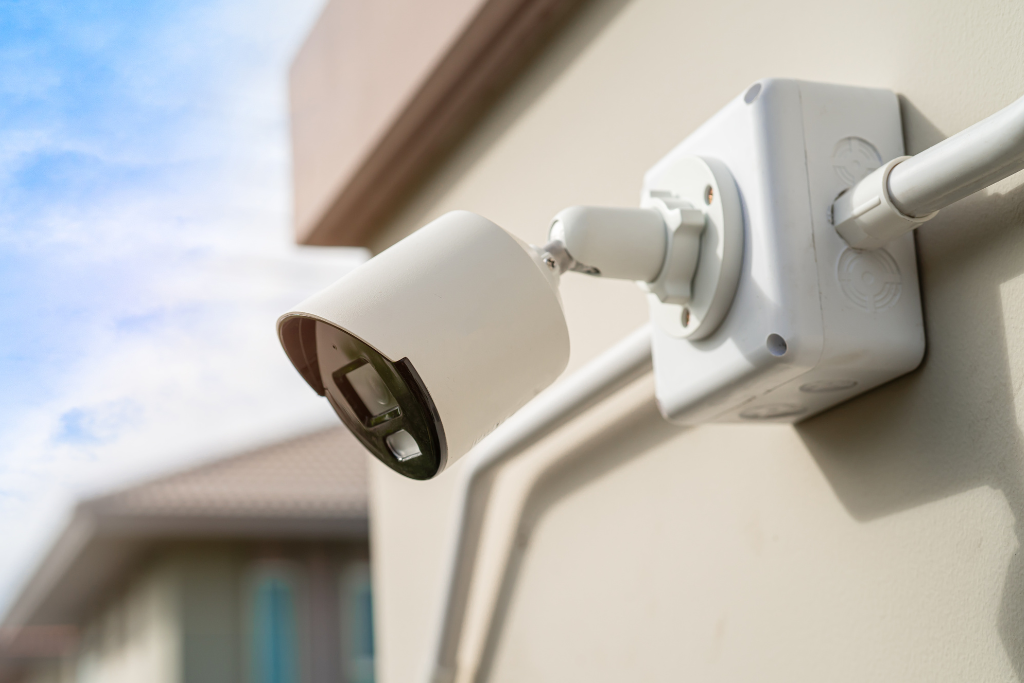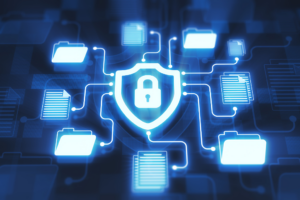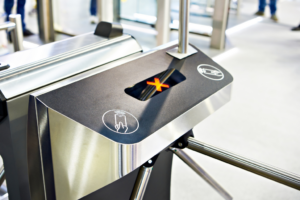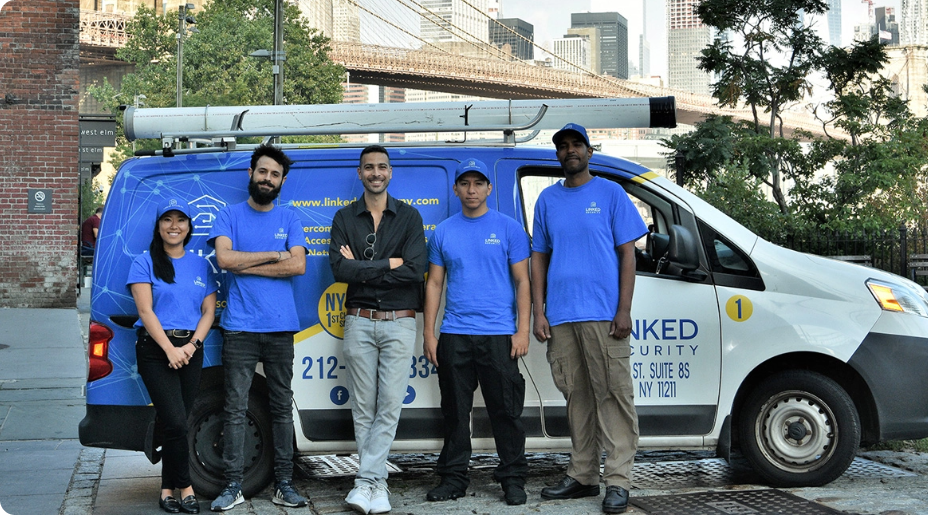Alarm Systems with Camera Systems

Integrated security systems (Alarm Systems with Camera Systems) are a great way to reduce false alarms by up to 90%. The integration of alarm and camera systems has become increasingly vital in today’s security landscape. This convergence allows for comprehensive monitoring, seamless detection, and enhanced response capabilities. As technology advances, the synergy between alarm systems, camera surveillance, and sound security not only provides a historical record but also real-time insights into potential threats. Understanding the evolution of new security systems integration sheds light on its growing significance in safeguarding homes, businesses, and public spaces.
Understanding Security System Integration
Definition of Security System Integration
Security system integration refers to the seamless connection and coordination between alarm systems and camera systems to enhance overall security. It involves the merging of different components, such as motion sensors, door/window contacts, surveillance cameras, and control panels, into a unified network. This integration allows for centralized monitoring and management of all security devices from a single interface.
Integrating alarm systems with camera systems enables real-time correlation between alarms triggered by the alarm system and corresponding video footage captured by the camera system. For instance, when an alarm is activated due to unauthorized entry detected by the alarm system, staff can immediately start recording relevant video footage for future review or evidence collection.
This level of synergy enhances security measures by providing comprehensive visibility into potential threats or incidents within a property or premises. By combining these two crucial components seamlessly, businesses, homeowners, and staff can achieve higher levels of protection against intrusions or criminal activities.
How Different Components Work Together
The key principle behind integrating alarm systems with camera systems lies in their collaborative functionality. When an event triggers an alert in the alarm system (such as a breach detected by a sensor), it communicates with the connected camera system to initiate recording based on predefined parameters. This coordinated response ensures that visual evidence is captured alongside any alarms raised.
For example:
- If a window sensor detects forced entry after business hours, it activates both the audible siren in the alarm system and instructs nearby cameras to start recording.
- In residential settings, if motion detectors detect movement while occupants are away, integrated cameras begin capturing footage to provide insight into potential security breaches.
This synchronized operation creates a more robust defense mechanism that not only alerts individuals but also provides visual verification of events for better decision-making during security incidents.
Importance of Integrated Alarm and Camera Systems
Enhanced Surveillance Capabilities
Integrated alarm systems with camera systems provide enhanced surveillance capabilities by combining the strengths of both technologies. When an alarm is triggered, the integrated system allows for immediate visual verification through connected cameras. This means that security personnel or homeowners can quickly assess the situation without physically being present at the location. For example, if an intruder triggers a motion sensor, the camera system will immediately start recording and send real-time footage to your smartphone or monitoring station.
The combination of alarms and cameras also enables continuous monitoring of premises, ensuring that any unusual activity is promptly detected and addressed. In addition to detecting unauthorized entry, integrated systems can also monitor environmental factors such as smoke or fire, providing comprehensive protection for homes and businesses.
Improved Response to Security Incidents
By integrating alarm systems with camera systems, security response to incidents is significantly improved. Real-time video feeds allow responders to assess situations accurately before arriving on-site. This ensures that appropriate measures are taken based on actual visual evidence rather than just relying on alarm notifications.
Moreover, integrated systems enable remote access to live video feeds from anywhere using smartphones or computers. This means that even when away from home or office, users can check in on their properties at any time for added peace of mind.
Deterrence of Criminal Activities
The presence of visible cameras alongside alarm sensors acts as a powerful deterrent against criminal activities. Potential intruders are less likely to attempt break-ins when they know they are being monitored visually in addition to triggering alarms. The integration creates a formidable barrier against unauthorized access and criminal behavior.
Benefits and Efficiency of Integrated Security Systems
Streamlined Monitoring Processes
Integrated alarm systems with camera systems offer streamlined monitoring processes. With both systems working together, security personnel can easily verify alarms by checking the live video feed from the cameras. This eliminates the need for physical patrols or unnecessary responses to false alarms, saving time and resources.
This integration also allows for remote monitoring, enabling security teams to keep an eye on multiple areas simultaneously. For instance, if an alarm is triggered in one part of a building, the corresponding camera feed can be instantly accessed to assess the situation without delay.
The combination of alarms and cameras creates a comprehensive approach to surveillance that enhances overall security effectiveness. By providing real-time visual verification of potential threats or incidents detected by alarm systems, this integrated solution significantly improves response times and reduces the likelihood of security breaches.
Cost-Effectiveness of Integrated Solutions
One significant benefit of integrating alarm systems with camera systems is cost-effectiveness. Instead of having separate infrastructures for each system, combining them into one unified platform reduces installation and maintenance expenses. This means lower operational costs in terms of equipment procurement as well as ongoing management and support.
Moreover, integrated solutions often require less manpower for monitoring and responding to security events due to their efficiency in verifying alarms through visual evidence provided by connected cameras. As a result, businesses can optimize their resource allocation while achieving higher levels of protection against unauthorized access or criminal activities.
Essentials for Integrating Security Systems
When integrating alarm systems with camera systems, it’s crucial to ensure compatibility between the two. The alarm and camera systems should be able to communicate effectively, sharing information seamlessly. For instance, if you have a Power over Ethernet (PoE) camera system, your alarm system should support PoE as well.
It’s important to consider the needs of both security devices when planning their integration. This involves assessing the hardware and software components required for seamless communication between the alarm and camera systems. Compatibility issues can arise from differences in protocols, data formats, or power requirements.
Necessary Components
The necessary components for integrating security systems include central control units that can manage both alarms and cameras simultaneously. Compatible sensors and triggers are essential for ensuring that events detected by the alarm system can trigger appropriate actions from the camera system.
When considering compatibility, it’s also crucial to evaluate whether there is a need for additional hardware such as converters or adapters to bridge any gaps between different types of devices within each system.
In terms of software components, an integrated platform or software solution that supports both alarm and camera functionalities is vital for seamless operation.
Integration Planning
Integration planning involves mapping out how alarms will trigger specific actions within the camera system. For example, when an intrusion is detected by the alarm system, it should prompt relevant cameras to start recording or adjusting their monitoring positions accordingly.
Implementation steps may include configuring settings on both systems so they can “talk” to each other effectively through programming or using dedicated integration features provided by manufacturers.
Best Practices for Security System Integration
Importance of Professional Installation
Professional installation is crucial. A trained technician ensures that the systems are integrated properly, minimizing the risk of malfunctions or vulnerabilities. They can also provide guidance on optimal camera placement for maximum coverage.
Professional setup guarantees that all components work seamlessly together, enhancing the overall security of your property. For instance, a professional installer will ensure that the cameras effectively capture any triggered alarms, providing visual evidence in case of an incident.
Data Protection and Privacy Best Practices
Security system integration involves handling sensitive data captured by cameras and alarm systems. It’s essential to prioritize data protection and privacy best practices to prevent unauthorized access or misuse.
Regular testing and maintenance procedures play a vital role in ensuring that both the alarm and camera systems function optimally at all times. This includes regular checks on camera angles, image clarity, motion detection capabilities, as well as testing alarm triggers for responsiveness.
Proper maintenance also involves updating software regularly to safeguard against potential cybersecurity threats. Conducting routine tests simulating real-life scenarios helps identify any weaknesses in the integrated security system before they become critical vulnerabilities.
Leveraging Analytics in Integrated Security Systems
Predictive Analysis
Integrated security systems that combine alarm systems with camera systems can leverage the power of analytics to enhance overall security. By utilizing data from both alarm and camera systems, businesses can perform predictive analysis to anticipate potential security threats. For example, by analyzing historical data on break-in patterns and suspicious activities captured by cameras, the system can predict potential future incidents.
This predictive analysis allows for a more proactive approach to security, enabling businesses to take preemptive measures before an actual threat occurs. Instead of merely responding to alarms or incidents after they happen, integrated systems with analytics provide the capability to identify and address vulnerabilities before they escalate into security breaches.
Utilizing real-time monitoring through analytics tools is another key benefit of integrating alarm and camera systems. With remote monitoring capabilities, security personnel can keep a close eye on various areas of a property in real time using data gathered from cameras and alarms. This enables immediate response to any anomalies or unauthorized activities detected by the system.
Enhancing proactive security measures with insights from analytics is crucial for maintaining a robust security posture. By analyzing trends and patterns within the collected data, businesses can gain valuable insights that enable them to implement targeted strategies for addressing specific vulnerabilities or risks.
Maintenance, Updates, and Incident Response in Integrated Systems
Importance of Regular Maintenance
Integrated alarm systems with camera systems require regular maintenance to ensure their reliability. This includes checking for any hardware malfunctions and testing the software components. By conducting routine maintenance, you can prevent potential system failures that may compromise security.
Regular maintenance also involves inspecting the intrusion detection sensors and cameras to verify that they are functioning correctly. For instance, ensuring that all cameras have clear visibility and adjusting them if necessary can help maintain optimal surveillance capabilities.
It’s crucial to address any issues promptly through regular inspections as part of the overall system upkeep. This proactive approach helps minimize downtime due to unexpected problems, ultimately contributing to a more secure environment.
Updating Software and Firmware
Updating the software and firmware of integrated security systems is vital for maintaining optimal performance. New updates often include bug fixes, improved features, or enhanced security measures that help fortify the entire system against potential vulnerabilities.
By regularly updating the software components in both alarm and camera systems, you ensure that they remain equipped with the latest advancements in security technology. These updates can enhance functionalities such as motion detection algorithms or video analytics capabilities.
Moreover, staying current with software updates mitigates compatibility issues between different components within an integrated system. It promotes seamless communication between devices while maximizing their effectiveness in safeguarding your premises.
Challenges and Solutions in Security System Integration
Different Systems
When integrating alarm systems with camera systems, compatibility issues can arise. For example, the alarm system may not be compatible with the camera system due to different communication protocols or technologies.
To address this challenge, it’s essential to work with a physical security consultant who specializes in new security systems and system integration. They can assess the existing infrastructure and recommend compatible solutions for seamless integration.
Moreover, investing in modern security systems that are designed to work together can mitigate compatibility issues. For instance, opting for an alarm and camera system from the same manufacturer can ensure better interoperability.
Overcoming Cybersecurity Threats
One of the critical challenges in integrated setups is cybersecurity threats. When multiple systems are interconnected, they become vulnerable to cyber attacks. Therefore, implementing robust cybersecurity measures is imperative.
For instance, utilizing encryption techniques to secure data transmission between alarm and camera systems can prevent unauthorized access. Regular security audits and updates conducted by experienced professionals can help identify and mitigate potential vulnerabilities.
Implementing Solutions
To overcome interoperability challenges when integrating alarm systems with camera systems, implementing standardized communication protocols such as ONVIF (Open Network Video Interface Forum) can facilitate seamless interaction between different devices.
Furthermore, ensuring that both the alarm and camera systems support industry-standard interfaces like API (Application Programming Interface) enables them to communicate effectively without compatibility issues.
Conclusion on Enhancing Security Through Integration
You’ve now seen the power of integrating alarm and camera systems for maximizing security. By combining these technologies, you’re not just adding layers to your security setup; you’re creating a dynamic, interconnected defense network that can adapt and respond to potential threats in real time. Remember, it’s not just about having more gadgets; it’s about how these gadgets work together seamlessly to create a robust shield for your property.
As you explore the world of security system integration, keep in mind that the key lies in finding the right balance between technology and strategy. Embrace the potential of integrated systems, stay updated with the latest advancements, and always prioritize proactive maintenance and incident response. Your commitment to staying ahead of potential risks will ensure that your security setup remains at the forefront of protection.
Frequently Asked Questions
How can integrating alarm and camera systems enhance security?
Integrating alarm and camera systems enhances security by providing real-time monitoring, immediate alerts, and comprehensive coverage. This integration allows for a proactive approach to security, enabling quick response to potential threats.
What are the essential components for integrating security systems?
Essential components for integrating security systems include compatible hardware and software, seamless connectivity protocols, centralized control panels, and reliable power backup. These elements ensure smooth communication between the alarm and camera systems.
How do integrated security systems improve efficiency?
Integrated security systems improve efficiency by streamlining operations, reducing false alarms through video verification, enabling remote access for monitoring and management, and facilitating quicker incident response. This leads to cost savings while enhancing overall safety.
What challenges are commonly faced in integrating alarm and camera systems for intrusion detection?
Common challenges in integration include compatibility issues between different manufacturers’ products, the complexity of system setup and configuration, as well as ensuring cybersecurity measures are robust enough to protect against potential breaches or hacks.
Why is leveraging analytics important in integrated security systems?
Leveraging analytics in integrated security systems enables advanced functionalities such as motion detection, facial recognition, object tracking which enhances situational awareness. It also provides valuable data insights that can be used to optimize system performance over time.





